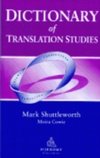
-
 Anglický jazyk
Anglický jazyk
Has the Syntax of Advertising changed? A Syntactic Analysis of Slogans on the basis of Leech's Concept of Standard Advertising Language
Autor: Marie-Kristin Hofmann
Seminar paper from the year 2014 in the subject English Language and Literature Studies - Linguistics, grade: 1,3, University of Mannheim (Anglistische Linguistik (A1)), language: English, abstract: This paper investigates whether the syntactic features... Viac o knihe
Na objednávku
16.65 €
bežná cena: 18.50 €
O knihe
Seminar paper from the year 2014 in the subject English Language and Literature Studies - Linguistics, grade: 1,3, University of Mannheim (Anglistische Linguistik (A1)), language: English, abstract: This paper investigates whether the syntactic features of current advertising slogans are still congruent with Leech's concept of Standard Advertising Language (established in 1966) since it is a linguistic framework still widely accepted among scholars. But more importantly, because it can provide an answer to a more far-reaching question lying behind the issue of the applicability of Leech's claims to advertising slogans today: in the course of almost half a century, has advertising language changed and does a new syntactic framework need to be established? The syntactic analysis is based on syntactic features such as sentence force, number of adjuncts, finiteness of verbs, tense and aspect, voice, type of co-ordination and number of adjectives. The findings suggest that the majority of the syntactic features of current advertising slogans are still congruent with Leech's findings. As a result, the applicability of Standard Advertising English can be extended to current advertising slogans. However, certain deviations from Leech's concept have been detected in the sample and they suggest a significant development: advertising slogans have changed in certain respects since the 1960s.
In Linguistics, four different types of sentence force can be distinguished, denoted as "mood" by Leech: declarative, imperative, interrogative and exclamative. The one occurring most frequently in Leech's sample is the imperative force: in his sample, "...over one in four major independent clauses were imperative." However, only very few imperative clauses are accompanied by a negative form since advertising aims at inciting actions instead of prohibiting them. The infrequency of negative forms, thus, represents a general principle of advertising language. Likewise, interrogative clauses are a common feature of advertising, but with only one in thirty major independent clauses being interrogative. As Leech does not mention declarative and exclamative clauses, they will not be treated as salient features of advertising language in this paper.
- Vydavateľstvo: GRIN Verlag
- Rok vydania: 2017
- Formát: Paperback
- Rozmer: 210 x 148 mm
- Jazyk: Anglický jazyk
- ISBN: 9783668506541




 Nemecký jazyk
Nemecký jazyk 
 Ruský jazyk
Ruský jazyk 




